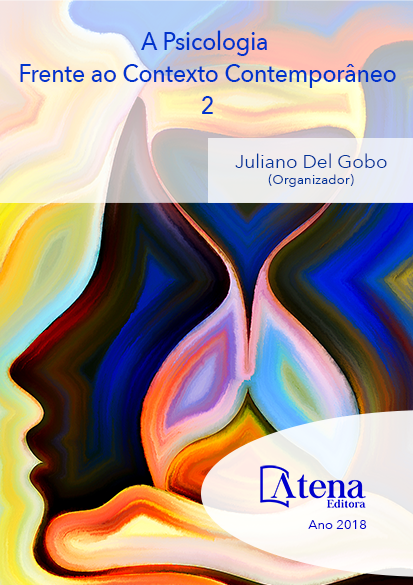
PRODUÇÃO DE SAÚDE E PARTICIPAÇÃO COM USUÁRIOS DE UM CENTRO DE ATENÇÃO PSICOSSOCIAL INFANTO-JUVENIL
O ano de 2002 marca no Brasil
a construção de uma rede de Centros de
Atenção Psicossocial da Infância e Juventude
(CAPSi). Assim, o CAPSi passa a atuar na
mudança do modo de operar o cuidado com
crianças e adolescentes com transtornos
mentais (COUTO, 2012). Em meio aos avanços
alcançados, há ainda pontos problemáticos.
Esta pesquisa-intervenção participativa localizase na intersecção entre dois deles: a prescrição
e consumo de psicotrópicos e a infância. O
objetivo da pesquisa é investigar a experiência
infantil atravessada pelo uso de medicamentos
psicotrópicos e pela inserção em uma rede
de cuidados em saúde mental, corroborando
a emergência da criança como ser múltiplo e
capaz de expressão. Como diretriz do trabalho
baseamo-nos na Estratégia da Gestão Autônoma
da Medicação, GAM (CAMPOS-ONOCKO et al,
2013), que visa cultivar a cogestão e autonomia
na relação com o tratamento e medicação.
Elaborada inicialmente para o público adulto, no
exercício da GAM deparamo-nos com o desafio
de reposicioná-la com crianças. Utilizando
de materialidades diversas construímos em
um CAPSi a Oficina da Palavra, ativa entre
março de 2015 e setembro de 2017, que se
configurou como um campo de pesquisa COM
crianças. Assim, o desafio tem sido acessar a
experiência com o medicamento psicotrópico,
acompanhando as diretrizes da estratégia GAM
e da Reforma Psiquiátrica no Brasil, promovendo
a participação das crianças e adolescentes nas
decisões sobre seu tratamento e produção de
saúde.
PRODUÇÃO DE SAÚDE E PARTICIPAÇÃO COM USUÁRIOS DE UM CENTRO DE ATENÇÃO PSICOSSOCIAL INFANTO-JUVENIL
-
DOI: 10.22533/at.ed.17918191210
-
Palavras-chave: GAM; saúde mental; infância; participação.
-
Keywords: GAM; mental health; childhood; participation.
-
Abstract:
The year of 2002 marks in Brazil
the construction of a network of Centers for Child
and Youth Psychosocial Care (CAPSi). In this
way, the CAPSi starts acting in the change of
the way of operating the care with children and
adolescents with mental disorders (COUTO,
2012). In the midst of the progress made, there
are still problem spots. This participative intervention research is takes place at the
intersection between two of them: the prescription and consumption of psychotropic
drugs and childhood. The objetive of this research is to investigate the children’s
experience crossed by the use of psychotropic drugs and the insertion in a network
of mental health care, corroborating the emergence of the child as a being multiple
and capable of express themselves. As a guideline of this work, we were based on
the Autonomous Management of Medication Strategy, GAM (CAMPOS-ONOCKO et
al, 2013), wich aims the cultivation of co-management and autonomy in relation to
the treatment and the medication. Initially elaborated for the adult public, in the GAM
exercise we are faced with the challeng of reposition it with the children. Using a variety
of materialities, we built a literature workshop, called the Atelier of Words, in CAPSi,
active between March of 2015 and September of 2017, which was set up as a field of
research with children. Thus, the challenge has been to access the experience with
the psychotropic drug, following the guidelines of the GAM strategy and the Psychiatric
Reform in Brazil, promoting the participation of children and adolescents in decisions
about theis treatment and health production.
-
Número de páginas: 15
- Luciana Vieira Caliman
- Janaína Mariano César
- Victoria Bragatto Rangel Pianca
- Alana Araújo Corrêa Simões
- Anita Nogueira Fernandes


